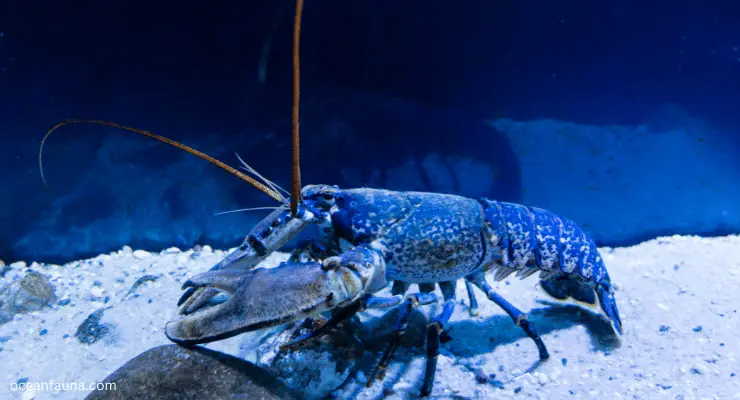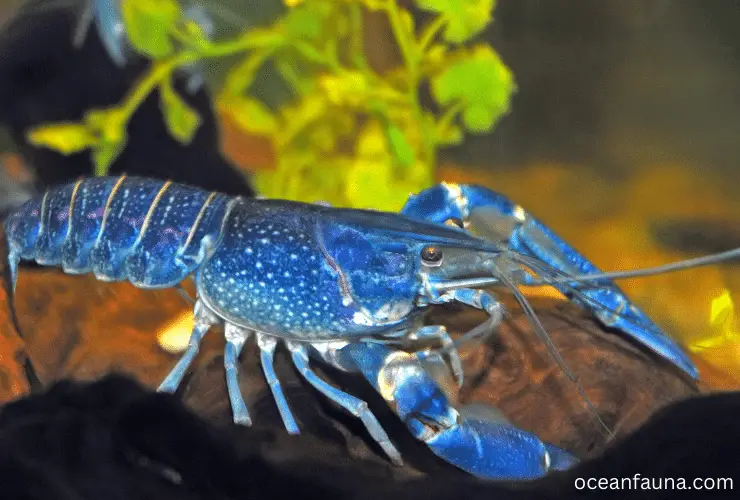While some may believe that lobsters, scorpions, and spiders are from the same family of animals – arachnids – this is, in fact, not true.
Lobsters are not arachnids, and they belong to their own group called Decapoda and should not be confused with arachnids.
This article will dive deep into the topic and uncover all its details!
Are Lobsters Arachnids?
Lobsters have a unique taxonomic classification that sets them apart from arachnids. This is because they are part of the invertebrate class Malacostraca and order Decapoda, while arachnids belong to the Arachnida class. As such, lobsters are more closely related to crabs, crayfish, shrimp, and prawns than spiders or scorpions.
At first glance, it can be easy to mistake lobsters for arachnids due to the similarities in their external morphology. They both have eight-jointed limbs with multiple joints that are covered with a protective exoskeleton.
They also have compound eyes on top of their head, allowing them to detect movement in their environment. However, upon closer inspection, there are several key differences between these two classes of animals.

Arachnids have two body segments – a cephalothorax (head and thorax) and an abdomen – while lobsters have three body segments – a cephalothorax (head and thorax), an abdomen, and a telson or tail fan at the end. This major difference between them sets them apart from one another taxonomically.
Another important difference between these two classes of animals is the type of respiratory organs they possess for breathing air or water. Arachnids possess book lungs with thin sheets of tissue called lamellae that allow oxygen to diffuse into their bloodstream from the outside environment.
Lobsters, however, possess gill-like structures called branchiopods along the sides of their bodies, which allow them to respire directly from the water through diffusion or active transport processes involving hemocyanin molecules found in their blood.
Lastly, lobsters also have specialized appendages known as chelipeds used primarily for mating or hunting, while arachnids lack this feature entirely, relying instead on their pedipalps (leg-like appendages) for locomotion and capturing prey.
Similarities Between Lobsters and Arachnids
Lobsters and arachnids are similar in that they both belong to the phylum Arthropoda and share several characteristics, such as:
- Exoskeleton: Both have a hard exoskeleton that protects their bodies and provides support.
- Jointed appendages: Both have segmented and jointed appendages, allowing for movement.
- Multiple body segments: Both have bodies composed of multiple segments, each of which has a specific function.
- Ecdysis: Both undergo molting, or shedding of their exoskeleton, in order to grow.
However, there are also many differences between the two groups, such as differences in the number and arrangement of legs, the presence of antennae, and differences in anatomy and physiology.
Differences Between Lobsters and Arachnids
Lobsters and arachnids differ in several ways, including the following:
- Number of legs: Lobsters have ten legs, while arachnids typically have 8.
- Antennae: Lobsters have antennae, while most arachnid species do not.
- Head anatomy: The head region of lobsters is composed of two segments, while arachnids have a cephalothorax composed of fused head and thorax regions.
- Internal anatomy: The internal anatomy of lobsters and arachnids differs significantly, with lobsters possessing gills for aquatic respiration and most arachnids possessing two pairs of book lungs for air respiration.
- Respiration: Lobsters breathe through gills, while most arachnids breathe through book lungs.
- Defence mechanism: Lobsters use their large claws to defend themselves, while many arachnid species possess venomous glands used for defence and hunting.
- Reproduction: While both lobster and arachnid species engage in sexual reproduction, their methodologies for achieving mating success are remarkably distinct.
Arachnids vs. Decapoda
Arachnids are a distinctive subset of the arthropod group and include spiders, scorpions, mites, and ticks. Their defining characteristic is that they have eight legs instead of the usual six and no antennae or wings (lobsters). Therefore, Arachnida differs significantly from other members within Decapoda, which make up the malacostracan subphylum in several ways.
Anatomy and Morphology
First, all arachnids have eight legs, while many decapods have five pairs of walking legs, though some species can also regrow lost legs or antennae.

Second, arachnid bodies are divided into two portions or segments – the cephalothorax (head region) and abdomen – while decapod bodies are divided into three distinct parts: head, thorax, and abdomen.
Third, while both groups possess eyes, only arachnids have pedipalps – short sensory appendages located near the mouthparts that aid them in sensing their surroundings and grasping prey items.
Habitat
Arachnids are found in all sorts of habitats, from scorching deserts to lush rainforests and grasslands. Decapods, however, mostly inhabit aquatic territories such as ocean depths or tidal estuaries but can also be seen on land in the form of crayfish. This handy creature has managed to adapt and survive even outside its traditional homes by taking refuge in human dwellings!
Reproduction and Life Cycle
Arachnida and Decapoda both reproduce sexually through internal fertilization, though the strategies employed to ensure mating success differ.
Arachnids typically engage in elaborate courtship behaviours like intricate movements or tactile displays, while many decapods instead rely on chemical signals known as pheromones that attract mates within close proximity for copulation.
Furthermore, both groups of creatures go through the same life cycle stages- egg, larva, nymph, and adult- but their duration can differ due to varied habitats and methods of reproduction.
For instance, it takes arachnid larvae up to two years before they reach adulthood, while aquatic decapods mature within days or weeks after hatching from eggs because there are bountiful food sources available in their watery habitat.
Nutrition/Feeding Habits
With regard to their diets, both categories have a wide variety of preferences for sustenance, commonly including minute insects like flies or beetles.
Though there are incidentally certain distinctions between the two when it comes down to which food items they choose more frequently – many arachnid species often opt towards cannibalism, whereas decapods typically favour an herbivorous diet with vegetation such as algae and residue depending on whether they live in terrain or underwater settings.

Additionally, though both groups are able to inject venom into their prey when hunting, it is more often seen among members of Araneae (spiders) than members of Decapoda (crustaceans).
FAQs
Are lobsters related to the spider?
At first glance, it might not appear that lobsters and spiders are related. While lobsters are crustaceans, spiders are arachnids. However, both of them belong to the common phylum of Arthropoda– a phylum characterized by jointed appendages and an exoskeleton.
This means they both have a hard exoskeleton outside their bodies, which helps protect them from predators and the external environment.
Additionally, their joint appendages allow for movement and range of motion, enhancing their ability to survive in our world.
Although lobsters and spiders seem different in physical appearance, closer inspection reveals remarkable similarities, hinting that they may be more closely related than first thought.
What is a lobster-like arachnid?
The Emperor Scorpion is a lobster-like arachnid found in Africa and parts of Asia. It boasts large, captivating pincers and an 8-inch long smooth black exoskeleton. With its striking features, it’s no surprise that this creature has become quite the attraction!
These unique creatures come alive after the sun sets – they are nocturnal by nature. But what’s even more impressive about the emperor scorpion is their ability to move quickly along various surfaces while managing to stay in perfect balance.
Despite their intimidating looks and size, these arachnids are not known to be dangerous to humans. All in all, the emperor scorpion is an extremely interesting creature worth learning more about.
Is a scorpion related to a lobster?
Interestingly, Scorpions and Lobsters are related – they both belong to the same phylum Arthropoda. Not only that, but they also share certain characteristics like their exoskeletons and jointed appendages. Moreover, scorpions have a close relationship with spiders as well since they fall under the category of arachnids. Overall, you can think of scorpions’ relation to lobsters, much like spiders’ relations with lobsters!
Conclusion
Now, you have a compact knowledge that lobsters are not arachnids. Rather, they belong to the Decapoda order of the Malacostraca class, which is part of the subphylum Crustacea.
Although both classes have some similarities, they are not the same. Both have some anatomical and habitual differences. So, don’t be confused.


2 thoughts on “Are Lobsters Arachnids? [No, Here’s Why]”